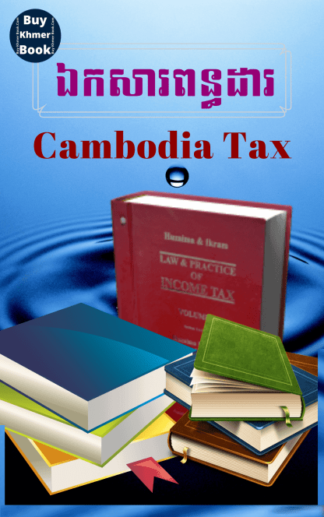mantle : A zone in the Earth’s interior between the crust and the core that is 2,900 kilometers (1,800 mi) thick. The lithosphere is composed of the topmost 65–70 kilometres (40–43 mi) of the mantle and the crust.
ឯកសារការងារនិងរៀនគ្រប់ប្រភេទ៖
---------------------------------------------
-

ពន្ធប៉ាតង់ (Patent Tax)
$3 ចុចទិញឯកសារខាងលើនេះ -

ប្រាក់រំដោះពន្ធលើប្រាក់ចំណូលឬប្រាក់ចំណេញ(Prepayment of Profit Tax/Income Tax)
$3 ចុចទិញឯកសារខាងលើនេះ -

ពន្ធអប្បបរមា (Minimum Tax)
$3 ចុចទិញឯកសារខាងលើនេះ -

អាករលើតម្លៃបន្ថែម ( Value Added Tax / VAT)
$8 ចុចទិញឯកសារខាងលើនេះ -

អាករពិសេសលើទំនិញនិងសេវាមួយចំនួន (Specific Tax on Certain Merchandises and Services)
$5 ចុចទិញឯកសារខាងលើនេះ -

អាករបំភ្លឺសាធារណៈ (Public Lighting Tax)
$5 ចុចទិញឯកសារខាងលើនេះ -

ការវាយតម្លៃគម្រោងវិនិយោគដោយប្រើវិធីសាស្ត្រ Adjusted Present Value /APV ( Investment Project Evaluation Using APV Method)
$7 ចុចទិញឯកសារខាងលើនេះ -

ការវាយតម្លៃគម្រោងវិនិយោគដោយប្រើវិធីសាស្ត្រ Average Accounting Return /Accounting Rate of Return ( Investment Project Evaluation Using AAR / ARR Method)
$4 ចុចទិញឯកសារខាងលើនេះ -

ការវាយតម្លៃគម្រោងវិនិយោគដោយប្រើវិធីសាស្ត្រ Discounted Payback ( Investment Project Evaluation Using Discounted Payback Method)
$4 ចុចទិញឯកសារខាងលើនេះ -

ការវាយតម្លៃគម្រោងវិនិយោគដោយប្រើវិធីសាស្ត្រ Internal Rate of Return ( Investment Project Evaluation Using IRR Method)
$6 ចុចទិញឯកសារខាងលើនេះ -

ការវាយតម្លៃគម្រោងវិនិយោគដោយប្រើវិធីសាស្ត្រ Modified Internal Rate of Return /MIRR ( Investment Project Evaluation Using MIRR Method)
$4 ចុចទិញឯកសារខាងលើនេះ -

ការវាយតម្លៃគម្រោងវិនិយោគដោយប្រើវិធីសាស្ត្រ Net Present Value /NPV ( Investment Project Evaluation Using NPV Method)
$6 ចុចទិញឯកសារខាងលើនេះ
-

កម្មវិធី QuickBooks រៀបចំដោយ ACCA, MBA, Tax Agent..បន្ទាប់ពីទិញ អានមិនយល់អាចសួរបាន /ទាក់ទងទិញ 093 646 646 (32)
-

ការគ្រប់គ្រង (Management) រៀបចំដោយ ACCA, MBA, Tax Agent..បន្ទាប់ពីទិញ អានមិនយល់អាចសួរបាន /ទាក់ទងទិញ 093 646 646 (67)
-

ការធ្វើទីផ្សារ (Marketing) រៀបចំដោយ ACCA, MBA, Tax Agent..បន្ទាប់ពីទិញ អានមិនយល់អាចសួរបាន /ទាក់ទងទិញ 093 646 646 (20)
-

គណនេយ្យ (Accounting) រៀបចំដោយ ACCA, MBA, Tax Agent..បន្ទាប់ពីទិញ អានមិនយល់អាចសួរបាន /ទាក់ទងទិញ 093 646 646 (215)
-

គ្រប់គ្រង់ហិរញ្ញវត្ថុ (Finance) រៀបចំដោយ ACCA, MBA, Tax Agent..បន្ទាប់ពីទិញ អានមិនយល់អាចសួរបាន /ទាក់ទងទិញ 093 646 646 (42)
-

ធនាគារនិងគ្រឹះស្ថានហិរញ្ញវត្ថុ (Banking & Financial Institution) រៀបចំដោយ ACCA, MBA, Tax Agent..បន្ទាប់ពីទិញ អានមិនយល់អាចសួរបាន /ទាក់ទងទិញ 093 646 646 (6)
-

ពន្ធដារ (Cambodia Tax) រៀបចំដោយ ACCA, MBA, Tax Agent..បន្ទាប់ពីទិញ អានមិនយល់អាចសួរបាន /ទាក់ទងទិញ 093 646 646 (79)
-

សវនកម្ម (Audit ) រៀបចំដោយ ACCA, MBA, Tax Agent..បន្ទាប់ពីទិញ អានមិនយល់អាចសួរបាន /ទាក់ទងទិញ 093 646 646 (41)



















